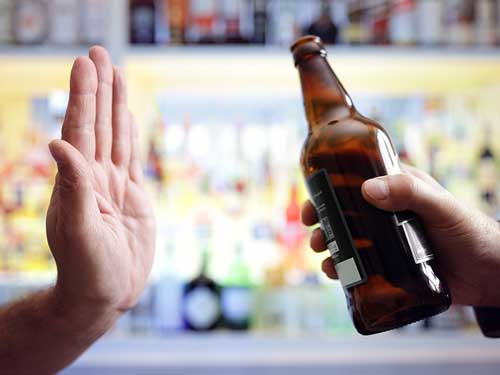




Each service provider will have procedures in place to deal with risky situations and it is the worker’s responsibility to be familiar with these procedures. However, all organisations will have similar principles for dealing with such risky situations.
A risk assessment covering the tasks undertaken and the risks to workers, and a record of these risks should be undertaken by managers. The service provider should decide what action to take to remove or decrease the risks of violence towards workers.
Bydd gan bob darparwr gwasanaeth weithdrefnau ar waith i ymdrin â sefyllfaoedd peryglus ac mae cyfrifoldeb ar y gweithiwr i sicrhau ei fod yn gyfarwydd â'r gweithdrefnau hyn. Fodd bynnag, bydd gan bob sefydliad egwyddorion tebyg ar gyfer ymdrin â sefyllfaoedd peryglus o'r fath.
Dylai rheolwyr gynnal asesiad risg ar gyfer y tasgau dan sylw a'r risgiau i weithwyr, a dylid cadw cofnod o'r risgiau hyn. Dylai'r darparwr gwasanaeth benderfynu pa gamau i'w cymryd er mwyn dileu neu leihau'r risgiau y ceir trais tuag at weithwyr.

The Health and Safety Executive outlines violence as any incident in which a person is abused, threatened or assaulted in circumstances relating to their work. This can include verbal and written abuse or threats, aggressive behaviour or harassment that causes distress (whether in person or over the phone), as well as physical attacks that workers in substance misuse services may experience. If workers feel there is a risk of violence they should aim to remove themselves from the situation and seek assistance. Workers may use “reasonable force” to defend themselves or another, but only as a last resort. All attempts should be made to defuse or minimise violent situations. In a violent situation a worker should:
Employees must report incidents of violent or threatening behaviour and managers must encourage this procedure.
Mae'r Awdurdod Gweithredol Iechyd a Diogelwch yn nodi bod trais yn cynnwys unrhyw ddigwyddiad lle y caiff person ei gam-drin, ei fygwth neu lle yr ymosodir arno mewn amgylchiadau sy'n gysylltiedig â'i waith. Gall hyn gynnwys cam-drin neu fygythiadau llafar ac ysgrifenedig, ymddygiad ymosodol neu aflonyddu sy'n achosi gofid (boed hynny wyneb yn wyneb neu dros y ffôn), yn ogystal ag ymosodiadau corfforol y gall gweithwyr o fewn gwasanaethau camddefnyddio sylweddau eu hwynebu. Os bydd gweithwyr yn teimlo bod perygl o drais, dylent anelu at dynnu eu hunain o'r sefyllfa a chael cymorth. Gall gweithwyr ddefnyddio "grym rhesymol" i amddiffyn eu hunain neu bobl eraill, ond dim ond pan fethodd popeth arall. Dylid gwneud pob ymdrech i dawelu neu leihau sefyllfaoedd treisgar. Mewn sefyllfa dreisgar, dylai gweithiwr wneud y canlynol:
Rhaid i weithwyr cyflogedig roi gwybod am ddigwyddiadau sy'n cynnwys ymddygiad treisgar neu fygythiol a rhaid i reolwyr annog y weithdrefn hon.

Alcohol withdrawal can be a complex matter. Some patients with mild symptoms can be managed in the community however others may have more severe symptoms and will need close supervision. The aim of alcohol withdrawal treatment is to prevent complications, as well as making withdrawal more comfortable for the service user and providing a safe environment to do so. Alcohol withdrawal symptoms vary in presentation, onset and intensity. They:
Mild to moderate symptoms may include:
Severe symptoms can result in neurological emergency and life-threating situations and immediate medical attention must be sought:
It is important that the service provider ensures that adequately trained workers deal with service users withdrawing from alcohol in order for the symptoms to be monitored effectively and that immediate medical assistance is available should symptoms progress to severe, life-threatening situations.
Alcohol withdrawal is very dangerous and should only be conducted under close supervision by qualified and suitable services.
Gall diddyfnu o alcohol fod yn fater cymhleth. Gellir rheoli rhai cleifion â symptomau ysgafn yn y gymuned, ond mae'n bosibl y bydd gan eraill symptomau mwy difrifol ac y bydd angen goruchwyliaeth agos arnynt. Nod triniaeth diddyfnu o alcohol yw atal cymhlethdodau, yn ogystal â sicrhau bod y broses ddiddyfnu yn fwy cyfforddus i ddefnyddiwr y gwasanaeth a chynnig amgylchedd diogel ar gyfer y broses honno. Mae symptomau diddyfnu o alcohol yn amrywio o ran sut y byddant yn ymddangos, pryd y byddant yn dechrau a'u dwysedd. Symptomau diddyfnu o alcohol:
Gall symptomau ysgafn i gymedrol gynnwys y canlynol:
Gall symptomau difrifol arwain at argyfwng niwrolegol a sefyllfaoedd sy'n bygwth bywyd. O dan amgylchiadau o'r fath rhaid cael sylw meddygol ar unwaith:
Mae'n bwysig bod y darparwr gwasanaeth yn sicrhau bod gweithwyr sydd wedi derbyn hyfforddiant digonol yn ymdrin â defnyddwyr gwasanaethau sy'n diddyfnu o alcohol er mwyn gallu monitro'r symptomau yn effeithiol a sicrhau bod cymorth meddygol ar gael ar unwaith os bydd y symptomau yn datblygu'n sefyllfaoedd difrifol sy'n bygwth bywyd.
Mae diddyfnu o alcohol yn beryglus iawn a dylai’r broses gael ei chynnal dan oruchwyliaeth wasanaethau addas a chymwysedig.

Opioid overdose generally presents as sedation, quickly progressing to respiratory distress, coma and death if not treated in time. Some opioids, including heroin and methadone, make substance misusers more vulnerable to dysrhythmias. Fentanyl may cause rigidity of the chest wall, which can lead to respiratory arrest. Significant opioid overdose can also lead to acute lung injury and pulmonary oedema.
Symptoms develop rapidly following IV injection or insufflation and the peak effect generally occurs within an hour of ingesting substances, however, symptoms may be delayed with ingestion and slow‐release substances.
The duration of action also depends on dose, ongoing absorption and the half‐life (how drugs are metabolised by the body) of the substance. The duration of action of any drug in overdose can be significantly longer than seen with therapeutic dosing.
In the community environment, treatment of overdose involves supportive care and the administration of the antidote naloxone. If indicated, you will need to follow this order of events:
Yn gyffredinol, bydd dos gormodol o opioidau yn ymddangos fel petai'r unigolyn o dan ddylanwad tawelydd, ond bydd anawsterau anadlol yn datblygu’n gyflym, a bydd yn mynd i goma ac yn marw os na chaiff driniaeth brydlon. Mae rhai opioidau, gan gynnwys heroin a methadon, yn golygu bod unigolion sy'n camddefnyddio sylweddau yn fwy tebygol o ddioddef camguriadau (dysrhythmias). Gall fentanyl achosi anhyblygrwydd yn wal y frest, a all arwain at ataliad anadlol. Gall dos gormodol sylweddol o opioidau hefyd arwain at anaf difrifol i'r ysgyfaint ac oedema pwlmonaidd.
Bydd y symptomau yn datblygu'n gyflym ar ôl chwistrellu drwy wythïen neu chwythu'r cyffur ac yn cyrraedd uchafbwynt fel arfer o fewn oriau o lyncu sylweddau. Fodd bynnag, mae'n bosibl y bydd oedi cyn y gwelir unrhyw symptomau ar ôl llyncu ac os bydd y sylweddau yn sylweddau sy'n rhyddhau'n araf.
Bydd hyd y symptomau hefyd yn dibynnu ar y ddogn, lefelau amsugno parhaus a hanner bywyd (sut y bydd y corff yn metaboleiddio'r cyffuriau) y sylwedd. Gall hyd symptomau unrhyw gyffur y cymerir dos gormodol ohono hefyd fod yn sylweddol hwy na hyd y symptomau os cymerir dogn therapiwtig.
Yn y gymuned, wrth drin dos gormodol, dylid cynnig gofal cefnogol a rhoi'r gwrthwenwyn naloxone i'r unigolyn. Os nodir y dylid gwneud hynny, bydd angen dilyn y drefn ganlynol:

Following needle stick injuries the worker should:
Os ceir anaf gan nodwydd, dylai'r gweithiwr wneud y canlynol: